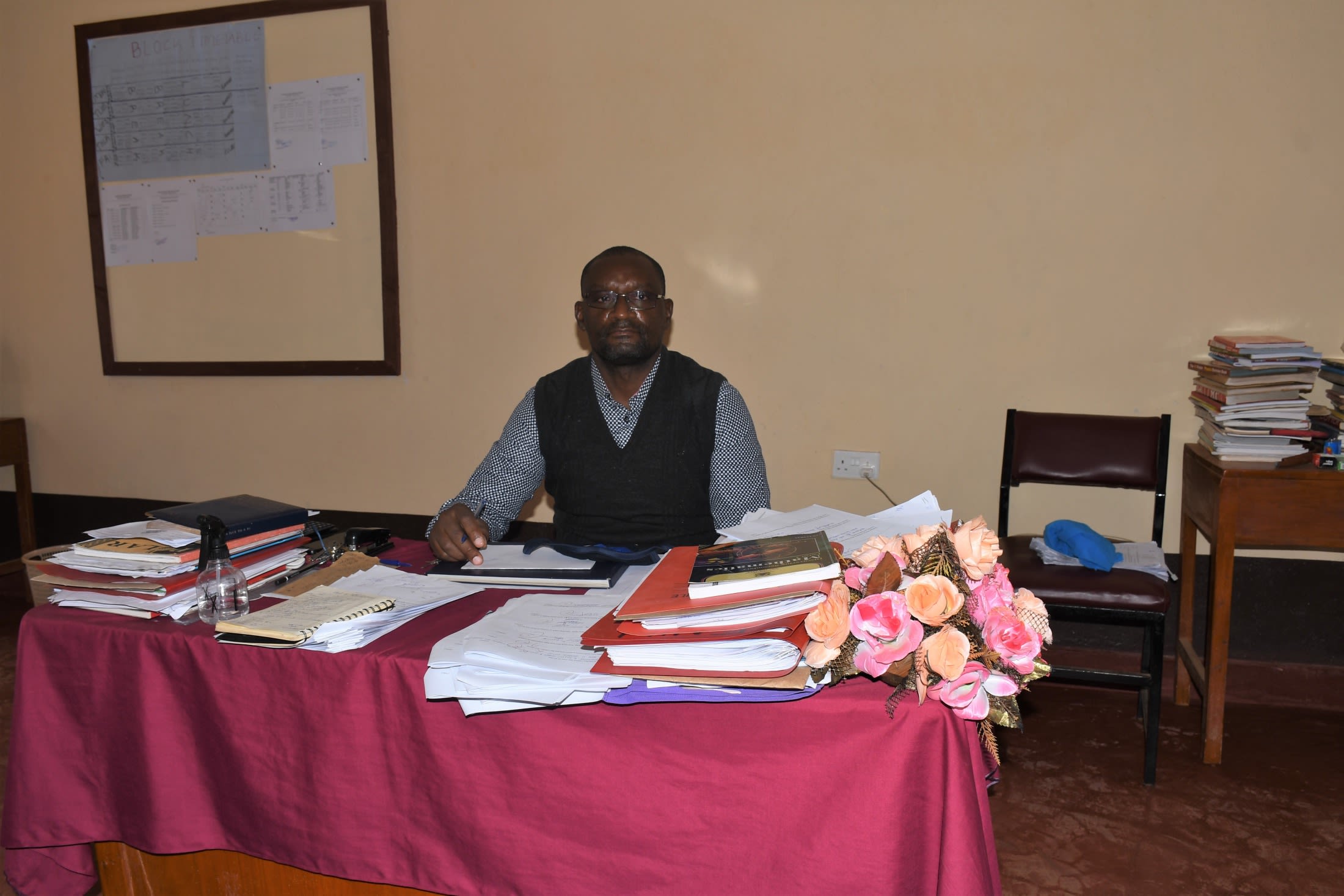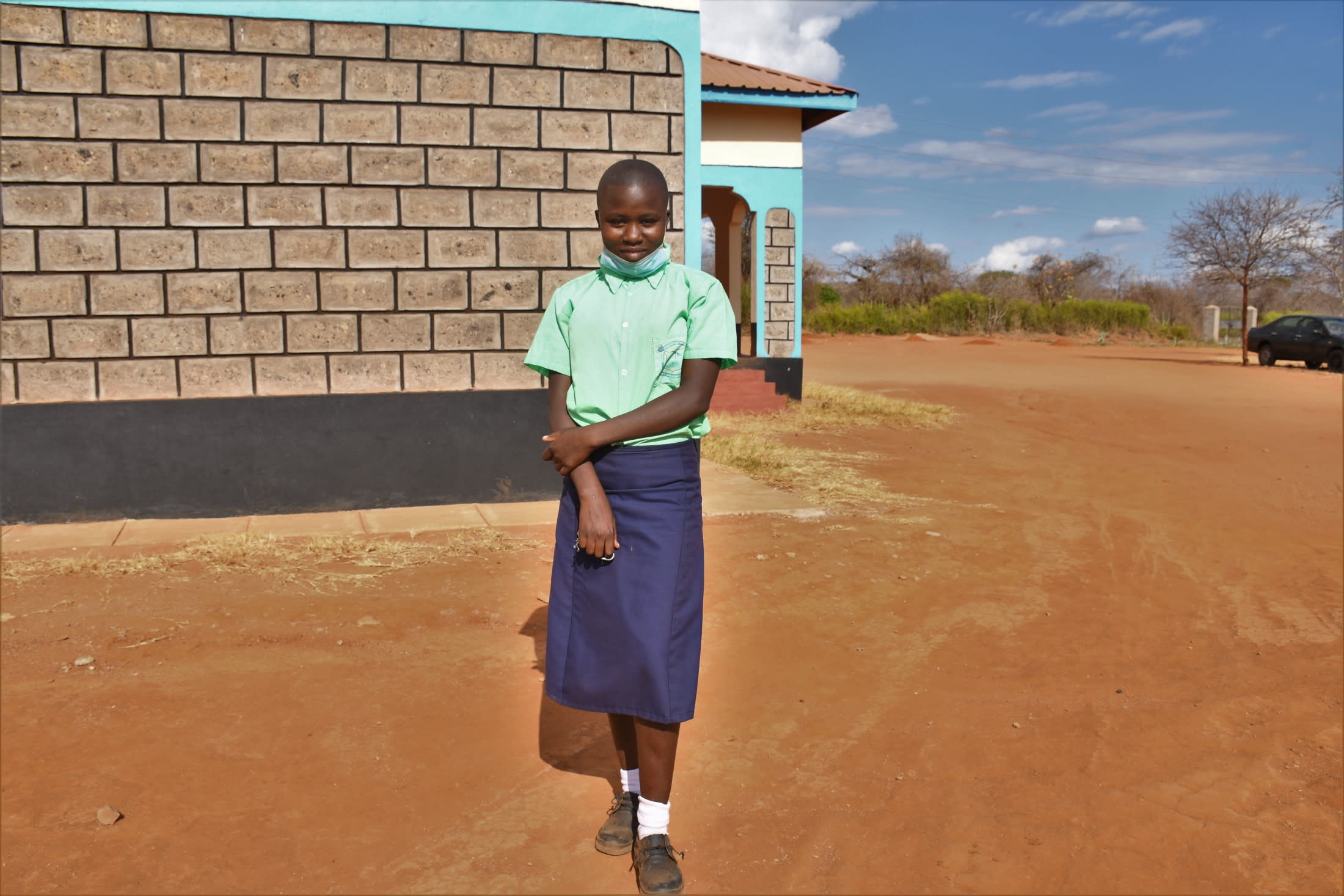Winzyeii Secondary School currently has three rainwater tanks with a capacity of 21,000 liters. However, the tanks can only hold water for three weeks before they run dry and the 159 staff and students end up without water again.
This consistent water scarcity forces the school to purchase water acquired from scoop holes or unprotected wells delivered by donkeys or oxen-drawn carts until the rain tanks can be refilled. The water delivery is expensive. The school spends up to KSE60,000 ($531USD) per term on water, which is a cost the school is not able to cover long-term, and would be better used supporting the students' education.

Paul Kavivya, the school's principal (in the photo above), commented, "I have to set apart water purchase funds because it is not provided by the government. Requesting these funds from the parents is hectic because the parents depend on farming as their source of income, which is affected by the long droughts. I also have to ration the water to sustain the school population longer. This has dismally affected hygiene and sanitation within the premises. Some of my students become absent due to infections contracted from the untreated water and this negatively affects the school's academic performance."
During the dry season, the water vendors generally do not deliver water until late in the afternoon. The lack of water for cooking forces students to take their lunch at 4 pm and attend their afternoon classes on empty stomachs, reducing their concentration.
But even with the delivered water, there is still not enough to go around, so it must be rationed. This leaves students thirsty and the hygiene and sanitation of the school lacking since the classrooms and latrines are rarely cleaned. To make matters worse, the purchased water they are able to drink is contaminated, salty, and smells foul. Drinking it puts students at risk of contracting typhoid, dysentery, and amoebas.

"Since water is used sparingly, our classrooms have accumulated dust, which affects my concentration while studying in class as it leads to respiratory infections. We also have little water to drink and sometimes I am unable to concentrate in class because of the pinching thirst. Learning subjects such as agriculture is also difficult because we have little water to take care of the crops," said Priscilla K., a student (in the photo above).
The proposed rain tank project will hold enough clean water (104,000-liters - nearly 5 times the current capacity) to sustain the school through the dry season. The school will no longer have to purchase water and can use the spare funds to improve the school's learning opportunities and infrastructure. And with adequate water, the student's concentration and the overall hygiene and sanitation of the school should improve.
Rain Tank
We will build a 104,000-liter rain tank for this school, making the others look tiny in comparison. Because of how rarely it rains in Southeastern Kenya, this tank's large volume is designed to store as much water as possible during the seasonal rains, making more water available through the dry months. This water will benefit the students, teachers, and supplementary staff.
Parents will mobilize the materials needed for construction, including sand, stones, and water. They will also lend their strength and time to help with the construction. We will complement their materials with a skilled artisan to lead the project in addition to providing the tools, lumber, metal, cement, and gutter system.
As soon as the tank has time to cure, it can begin collecting rainwater for the school's use.
Training
We will train students and staff on sanitation, hygiene, and other topics for 1 day. Those in attendance will form a school health club that will promote good hygiene and sanitation practices both at school and at home. They will learn all of the steps to proper handwashing, how to treat water, and how to keep their environment clean. The school will also be taught how to best oversee and maintain their new rain tank and handwashing stations.
Handwashing Stations
A total of 3 handwashing stations will be installed upon the project’s completion and before training. These are 1,000-liter plastic tanks fitted with 3 taps each, allowing 9 students to wash their hands at once. The student health club and school management will be responsible for making sure the tanks are filled with water and that a cleaning agent such as soap or ash is always available.

 Rainwater Catchment
Rainwater Catchment
 Rehabilitation Project
Rehabilitation Project































